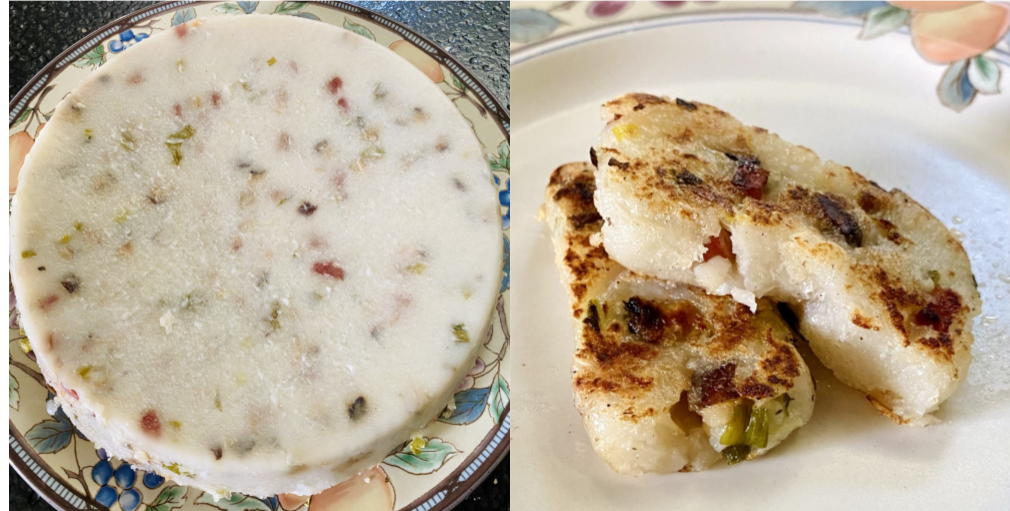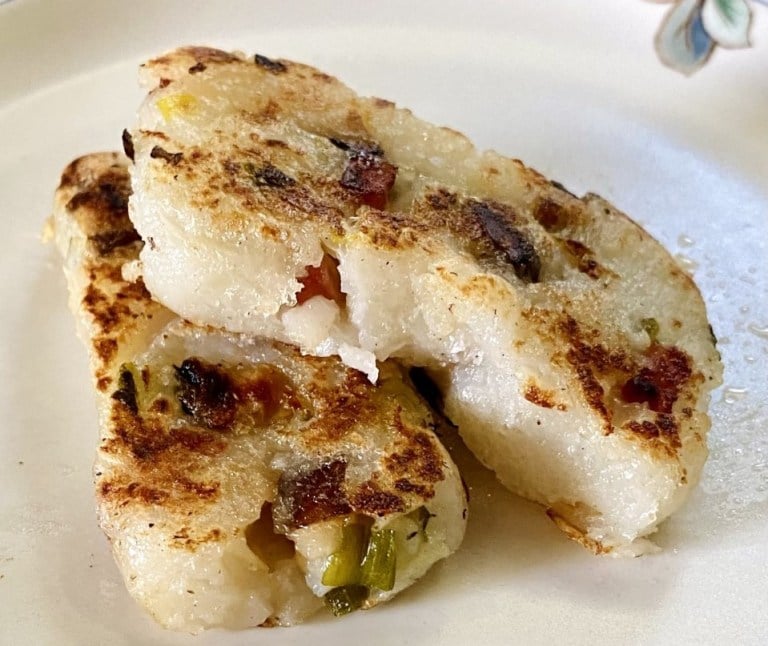On May 1, we officially entered Asian American and Pacific Islander (AAPI) Heritage Month. Admittedly, this year was my first time hearing about the month-long celebration of AAPI persons and cultures despite my belonging to the ethnic category, so I felt inspired to connect with my Chinese and Taiwanese background through what is arguably the predominant language shared between both countries: food.
In honor of AAPI Heritage Month, I am cooking and sharing some family recipes, many of which I originally learned from my grandmother and since modified to better suit the tastes of my immediate family members. I have written these recipes keeping simplicity in mind, with optional modifications listed for home cooks craving some added complexity. If possible, these recipes are also best made with family, and as we await an end to quarantine, I hope cooking these recipes together will provide a sense of light in these dark times.
I had my first slice of carrot cake at a middle-school soccer team party, and while I tried to hide it, it left me feeling utterly confused.
Carrot cake — at least in the American sense of the word, with its warm, gingery spices and studs of golden raisin and walnut — was (unfortunately) an unfamiliar entity for much of my childhood. You see, unlike in English, the Mandarin word for carrot (蘿蔔) is also used for its white-fleshed cousin, the daikon radish. Within the bubble of my Chinglish-speaking household, I grew up eating a colorful array of carrot and “carrot” dishes alike, never stopping to question the dichotomy of the Mandarin term.
Of all the “carrot”-based foods I’ve eaten, this daikon radish cake, more commonly known as “turnip cake” on dim sum menus, is undoubtedly my favorite of the bunch (haha). To date, there is only one person who, I will concede, loves the “carrot” cake more than I do; as corny as it sounds, I dedicate this trial-and-error recipe to my dad — legendary 蘿蔔糕 lover and dipping sauce extraordinaire.
Daikon Turnip Cake (蘿蔔糕)
Yields one 9-inch diameter cake
Ingredients:
- 1 ½ – 2 lbs. daikon radish, grated
- ~2 cups water
- Neutral oil for pan frying and greasing
- 2 tbsp dried shrimp, rehydrated and finely chopped
- 6 dried shiitake mushrooms, rehydrated and finely chopped
- 1 ½ – 2 Chinese sausages, diced
- 2 scallion stalks, finely chopped
- 1 ½ cups rice flour
- 1 tablespoon cornstarch
- ¾ teaspoon salt
- ¾ teaspoon sugar
- ½ teaspoon white pepper
Equipment:
- Large frying pan with lid
- 9-inch diameter cake pan
A quick note…
… for vegetarians and vegans. Don’t despair, this recipe can be made meat-free by substituting extra shiitake mushroom for the Chinese sausage and dried shrimps or leaving the meat out entirely. Additionally, although I have yet to try it myself, adding some fried shallots (maybe about ¼ cup) should also lend a unique punch of flavor to the meat-free recipe.
… on rice flour. For my fellow mochi cake or sticky rice lovers, please note that the rice flour called for in this recipe is not the same thing as the glutinous sweet rice flour from brands like Mochiko. What’s the difference, you ask? Rice flour is made from ground white rice while sweet rice flour is made from ground glutinous rice, and the two cannot be substituted. Here, I used Flying Horse brand rice flour (pictured below).
Directions:
Prepare all fresh ingredients, making sure to soak the shiitake mushrooms and dried shrimps at least 20 minutes prior to chopping.

Pour grated daikon into the frying pan and add enough water (~2 cups for my flat-bottom pan) that it nearly reaches the top of the daikon. Turn heat to low and simmer for 8–10 minutes until the daikon softens and cooks through (see photo below). Scoop cooked daikon into a mixing bowl and add 1 ½ cups of the remaining water from the pan. Set aside to cool, and wipe the frying pan clean.

Coat the frying pan with neutral oil (I used canola) and turn heat to medium-high. Add the shiitake mushrooms, Chinese sausage and dried shrimps. Stir-fry for 3–5 minutes until fragrant and the sausage is fully cooked. Turn off heat and stir in scallions before transferring everything (oil included) to a bowl to cool. Wipe out the frying pan.

Add rice flour, cornstarch, salt, sugar and white pepper to the mixing bowl with the daikon and water, mixing until homogenous. Add in the stir-fried ingredients, including the oil, and mix well. Let sit for 15 minutes. The mixture should have an oatmeal-like consistency.
Pour mixture into a greased 9-inch diameter cake pan. Place the cake pan into the frying pan and add water into the frying pan until the cake pan begins to float. Turn heat to medium-low and cover to steam for 50-60 minutes. The cake should feel solid with a slightly squishy texture when ready.

Remove cake pan and set aside to cool for 30 minutes. Run a small knife along the edges to release when ready. The easiest way to do this is to invert the cake pan against a large plate, allowing the cake to slide out.
At this point, the daikon cake can be sliced and eaten as is, though it is typically pan-fried before serving. To fry, add neutral oil to a frying pan and turn heat to medium-high. Add 1 to 1 ½-inch thick slices to the pan and fry until golden brown and crispy on the outsides, flipping as needed (see photo below).

Serve with dipping sauce (I’m partial to a mix of chili garlic sauce, soy sauce and vinegar, but oyster sauce and X.O. sauce are also quite popular accompaniments).
While this recipe might appear quite daunting at first (it definitely did for me), I promise the simple pleasure of homemade dim sum in the morning makes all the effort worth it in the end. Plus, the daikon packs a nutritional punch, so with just a bit of hard work, you can have your cake and eat it, too!
